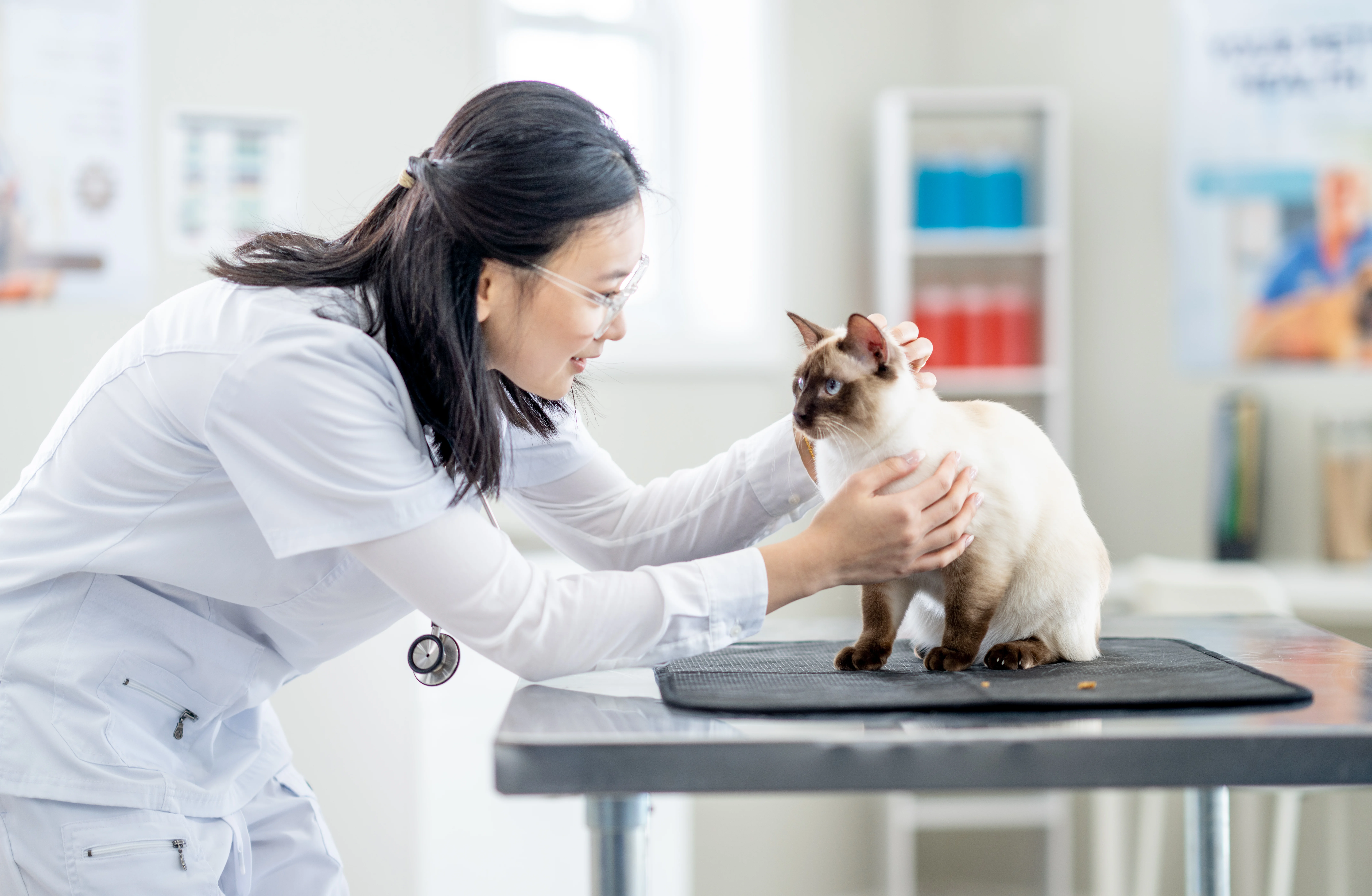Feline Weight Loss: Top 5 Causes & a Potential Solution

Sponsored by Dechra
Feline weight loss is a common finding in general veterinary practice, especially among middle-aged to senior cats, with studies having shown that body weight decline is common among cats ≥12 years of age.1
Weight loss can sometimes be attributed to typical aging changes, whereas other cases may be related to an underlying medical condition. The cause of weight loss can sometimes be easily determined, such as in the case of inadequate nutrition or an obvious abnormality on physical examination. In many cases, however, weight loss warrants a diagnostic investigation based on the patient’s signalment, medical history, and/or physical examination findings to determine the underlying cause.
The following are 5 conditions that are commonly implicated in feline weight loss and should be considered during the diagnostic investigation in this patient population.
1. Diabetes Mellitus
Diabetes mellitus is a common endocrine condition of cats, with factors such as obesity, age, and steroid administration increasing the risk for disease.2 Cats with diabetes are unable to metabolize glucose for energy, causing them to break down fat and muscle tissue to meet their metabolic needs. Other common clinical signs of diabetes include polyuria and polydipsia.2 This condition is diagnosed when elevated fructosamine levels or consistent hyperglycemia/glucosuria are present.
2. Hyperthyroidism
Feline hyperthyroidism, which affects ≈10% of cats >10 years of age,3 leads to weight loss via an increase in metabolic rate. Appetite in these patients often remains normal to increased.3 Other common clinical signs of hyperthyroidism include polyuria, polydipsia, restlessness, vomiting, and diarrhea.3 Diagnosis requires assessment of the patient’s thyroxine (T4) level.
3. Chronic Kidney Disease
As many as 31% of cats 10 to 15 years of age have some degree of detectable chronic kidney disease (CKD).4 CKD leads to weight loss via a variety of mechanisms, including inappetence, increased metabolic requirements, inflammation, and malabsorption.5 Weight loss in cats with CKD is associated with shorter survival times, underscoring the importance of maintaining body weight in these patients.5 In addition to presenting with weight loss, CKD patients are often presented with a history of polyuria and polydipsia. Diagnosis of CKD can generally be made through basic laboratory testing.
4. Gastrointestinal Disease
Common GI diseases in middle-aged and senior cats include inflammatory bowel disease, pancreatitis, and feline lymphoma. Weight loss caused by GI conditions can be due to poor nutrient absorption or decreased appetite. Clinical signs of these conditions may include vomiting, diarrhea, and lethargy. Laboratory testing, diagnostic imaging, gastrointestinal biopsy, and/or exploratory laparotomy are typically required for diagnosis.
5. Dental Disease
Dental disease may go undetected without an anesthetized examination and/or dental radiography, as signs of pain are not always detectable. However, the pain associated with dental disease can result in anorexia or dysphagia, leading to weight loss. An anesthetized dental cleaning and examination with dental radiography should be considered in any patient with unexpected weight loss, especially if another cause for weight loss cannot be found on laboratory tests or physical examination.
Addressing Weight Loss with Mirataz® (Mirtazapine Transdermal Ointment)
Although diagnosing and addressing the underlying medical condition is the most effective way to promote weight gain, adjunct therapies can also play a valuable role. This is especially true during the diagnostic investigation and stabilization process, when the cause of a patient’s weight loss cannot be determined, and/or if definitive treatment and reversal of the underlying disease is not possible.
Mirataz® is a once-daily topical treatment indicated for body weight gain in cats with a history of weight loss.6 Studies indicate that Mirataz administration increases treated cats’ body weight by as much as 3.9% in as few as 14 days of treatment.7 Because this product is applied topically, administration does not rely on a client’s ability to give oral medication, which can be especially valuable in cats that are not eating.
Mirataz is an α2-adrenergic receptor antagonist noradrenergic and serotonergic antidepressant drug. Its mechanism of action has not yet been fully elucidated, but it appears to be multifactorial.6
The appropriate use of Mirataz can promote safe weight gain in cats with a variety of clinical conditions. Adverse reactions are uncommon and mild, including application site reactions, vocalization, hyperactivity, and vomiting.6 Mirataz should be avoided in cats with a documented hypersensitivity to mirtazapine and cats that are already receiving a monoamine oxidase inhibitor. This medication should be used with caution in cats with renal disease and hepatic disease.6
Indication
Mirataz is indicated for body weight gain in cats with a history of weight loss.
Important Safety Information
Mirataz® (mirtazapine transdermal ointment) is for topical use in cats only under veterinary supervision. Do not use in cats with a known hypersensitivity to mirtazapine or any of the excipients. Do not use in cats treated with monoamine oxidase inhibitors (MAOIs). Not for human use. Keep out of reach of children. Wear gloves when handling/applying, wash hands after and avoid contact between the treated cat and people or other animals for 2 hours following application. Use with caution in cats with hepatic and kidney disease. Cat’s food intake should be monitored upon discontinuation. Safety has not been evaluated in cats less than 2 kg, less than six months of age or in breeding, pregnant or lactating cats. The most common adverse reactions observed during clinical trials were application site reactions, behavioral abnormalities (vocalization and hyperactivity) and vomiting. For product label, including complete safety information, click here.
